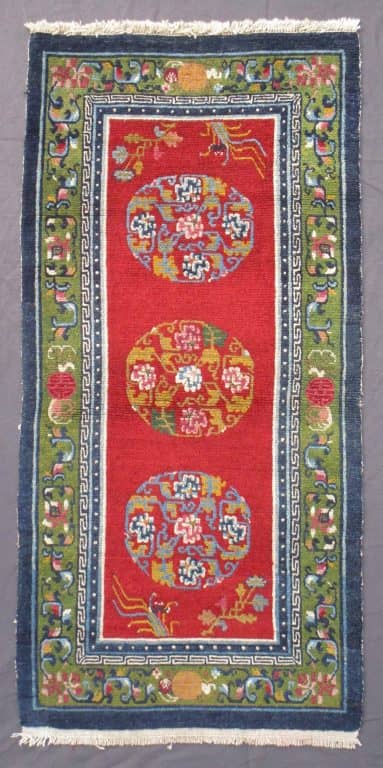Antique Tibetan Khaden
Description
This antique Tibetan Khaden ( sleeping or sitting rug) dates to the late 19th century. It follows a classic format of three medallions filled with lotus flowers arranged in a vertical column on a plain, deep red field. The sequence of borders includes a “pearl border” that is often found in Chinese carpets, a meandering geometrical border and the green-ground main border in a meandering pattern of florals, with four Chinese shou characters symbolising longevity in the middle of each side. Typically, in a Khaden the proportion of length to width is roughly two : one. These rugs were commonly used in tents and homes to sit or sleep on, which is one explanation for the fairly deep pile made from the lustrous Tibetan Highland wool and produced using the Tibetan knot in a relatively coarse weave.
A similar rug, described as a Khumba-Khaden, was purchased in 1897 by the Royal Museum of Scotland from Annie Taylor, a doctor who, after several failed attempts to reach Lhasa in the 1880s and early 1890s, finally managed to get into Tibet in the mid 1890s. Her servant is said to have acquired the rug that was then sold to the Edinburgh museum in the town of Yatung. For an image and further reading, see
Hongsermeier, Hans (ed.), Tibeter-Teppiche. With a foreword by Heinrich Harrer. Innsbruck, Pinguin Verlag,1987, p. 14 (image), and pp. 13 – 79 “Die alten tibetischen Teppiche” by Peter Mauch
Wool pile, all naturally dyed, on a wool foundation. Excellent condition, with a repair to one corner
£2,950

